Timing of cochlear responses inferred from frequency-threshold tuning curves of auditory-nerve fibers
- PMID: 20951191
- PMCID: PMC3039049
- DOI: 10.1016/j.heares.2010.10.002
Timing of cochlear responses inferred from frequency-threshold tuning curves of auditory-nerve fibers
Abstract
Links between frequency tuning and timing were explored in the responses to sound of auditory-nerve fibers. Synthetic transfer functions were constructed by combining filter functions, derived via minimum-phase computations from average frequency-threshold tuning curves of chinchilla auditory-nerve fibers with high spontaneous activity (Temchin et al., 2008), and signal-front delays specified by the latencies of basilar-membrane and auditory-nerve fiber responses to intense clicks (Temchin et al., 2005). The transfer functions predict several features of the phase-frequency curves of cochlear responses to tones, including their shape transitions in the regions with characteristic frequencies of 1 kHz and 3-4 kHz (Temchin and Ruggero, 2010). The transfer functions also predict the shapes of cochlear impulse responses, including the polarities of their frequency sweeps and their transition at characteristic frequencies around 1 kHz. Predictions are especially accurate for characteristic frequencies <1 kHz.
Copyright © 2010 Elsevier B.V. All rights reserved.
Figures


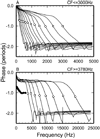
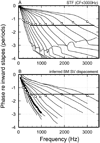
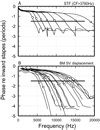
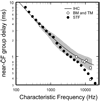
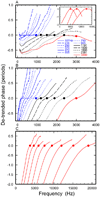
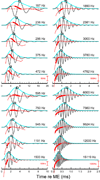


References
-
- Bode HW. Network Analysis and Feedback Amplifier Design. New York: 1945.
-
- de Boer E, Nuttall AL. The mechanical waveform of the basilar membrane. I. Frequency modulations ("glides") in impulse responses and cross-correlation functions. J Acoust Soc Am. 1997;101:3583–3592. - PubMed
-
- Goldstein JL, Baer T, Kiang NY. A theoretical treatment of latency, group delay and tuning. Characteristics for auditory nerve responses to clicks and tones. In: Sachs MB, editor. The Physiology of the Auditory System. Baltimore: National Educational Consultants; 1971. pp. 133–141.
-
- Huang S, Dong W, Olson EC. Subharmonics and auditory nerve tuning curves. Assoc.Res.Otolaryngol., Midwinter Meet. Abstracts. 2010;33:255.
-
- IEEE. Programs for Digital Signal Processing. New York: IEEE Press; 1979.
Publication types
MeSH terms
Grants and funding
LinkOut - more resources
Full Text Sources

